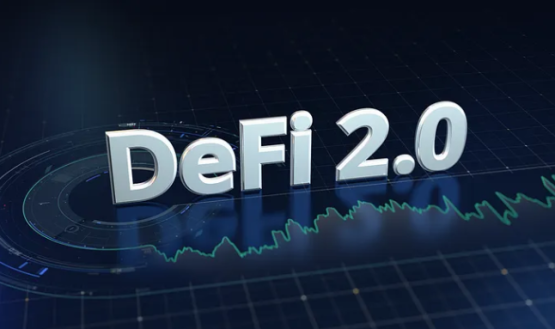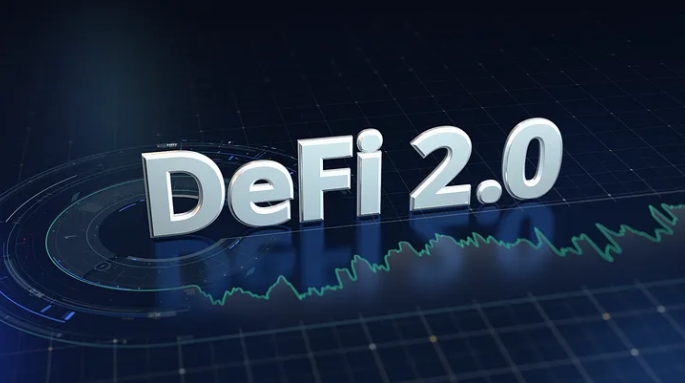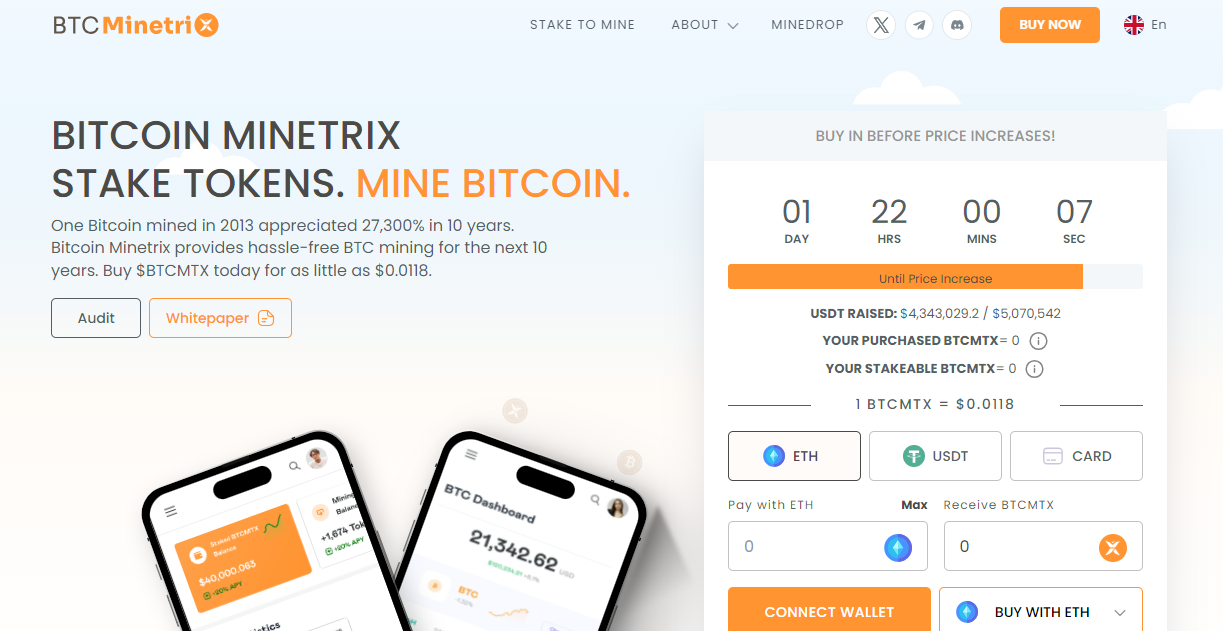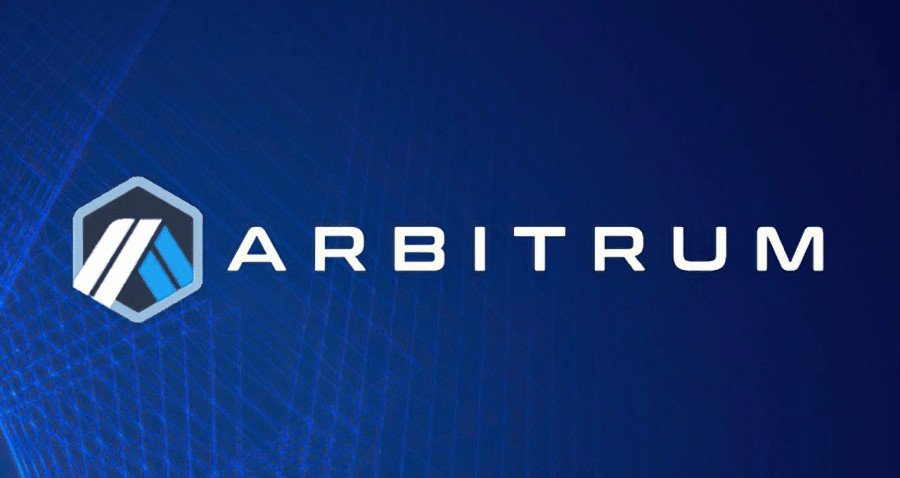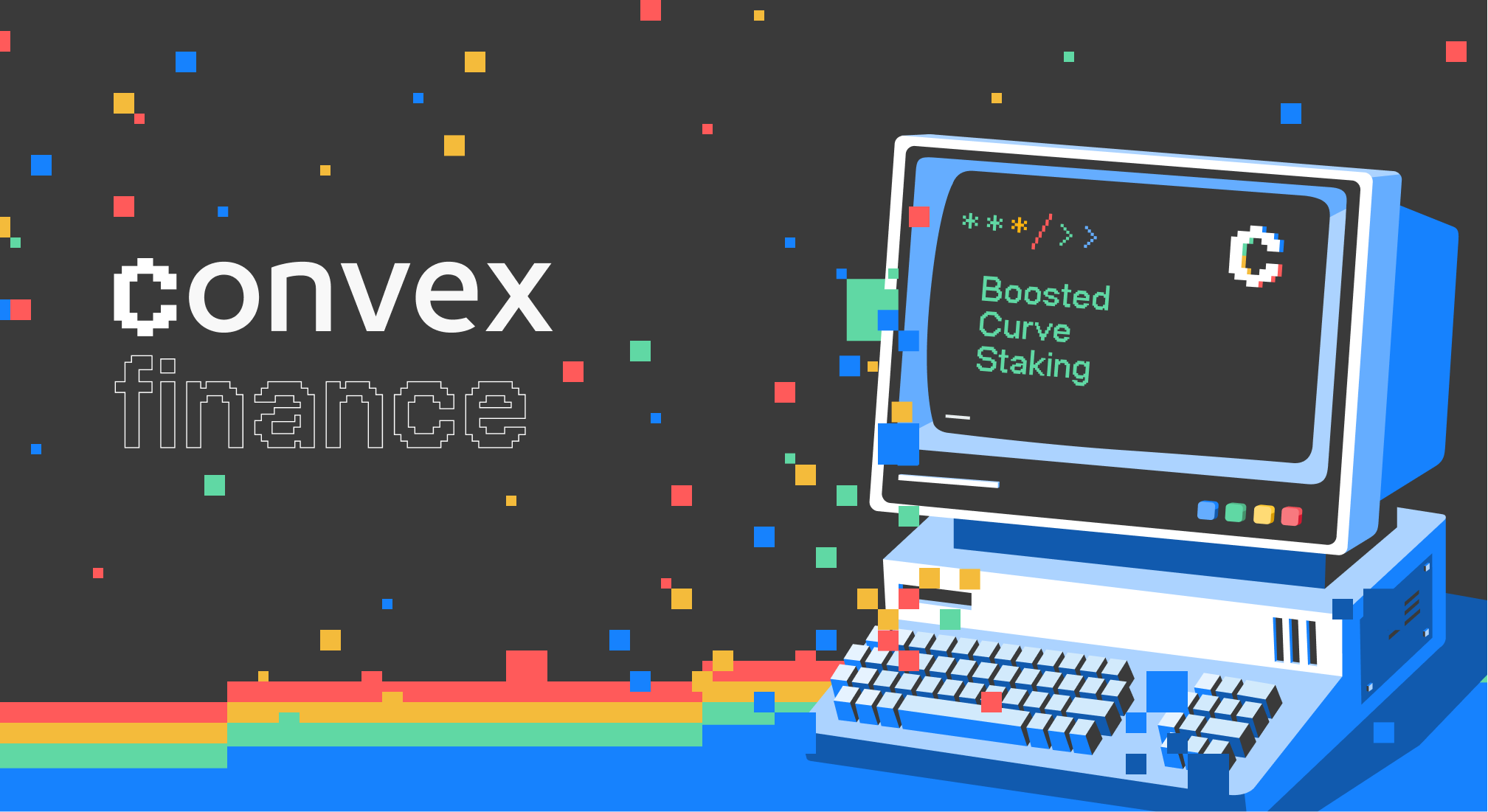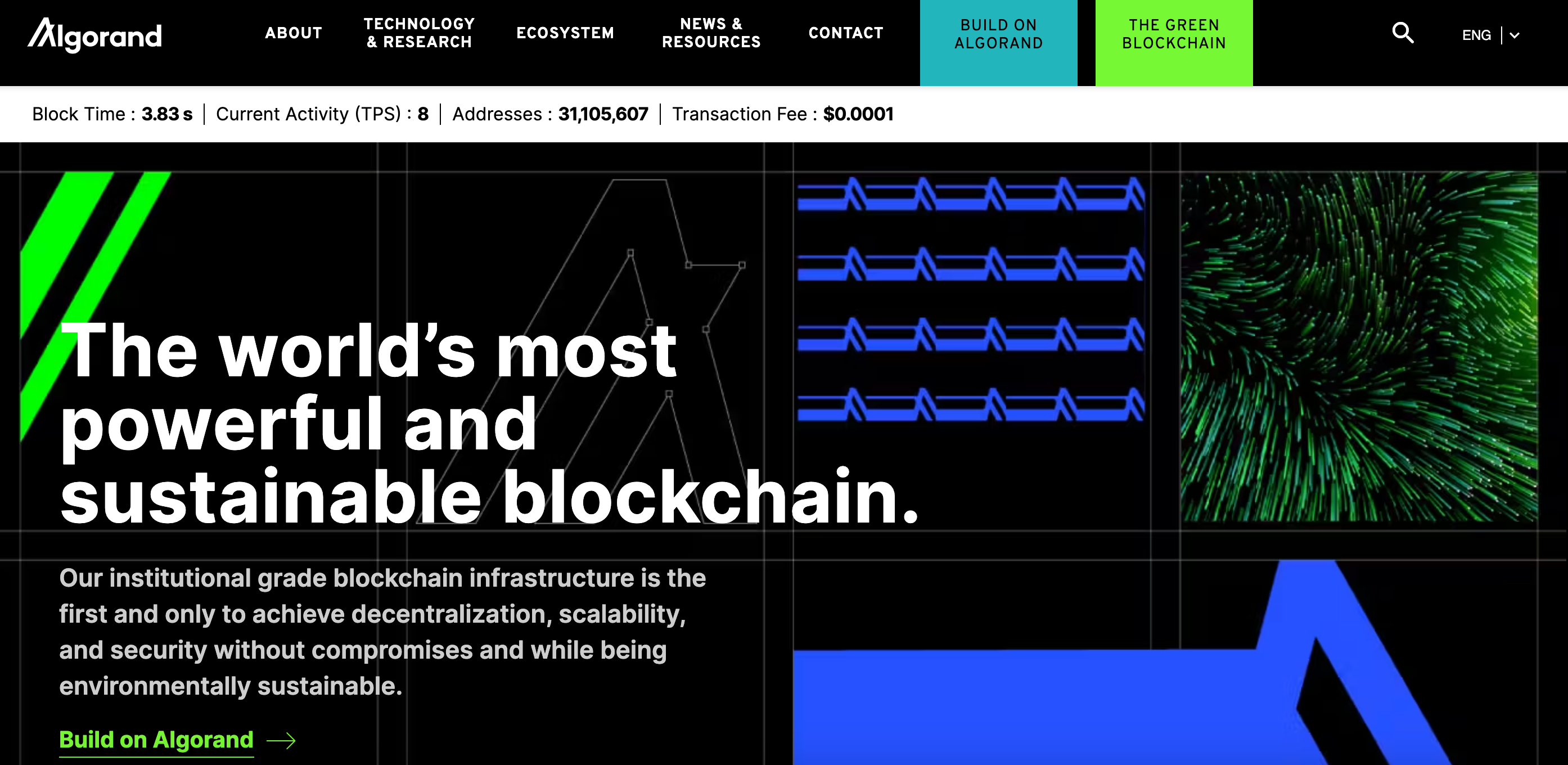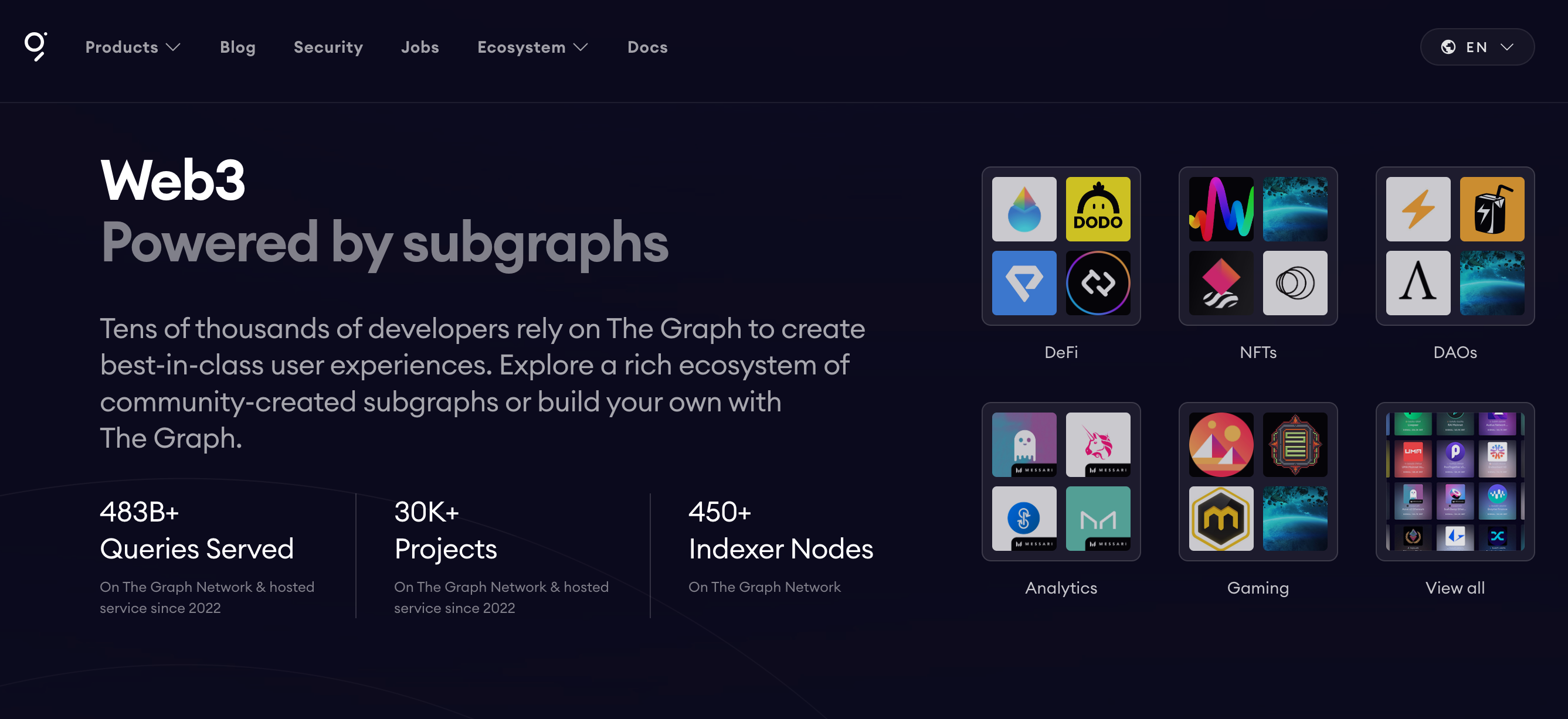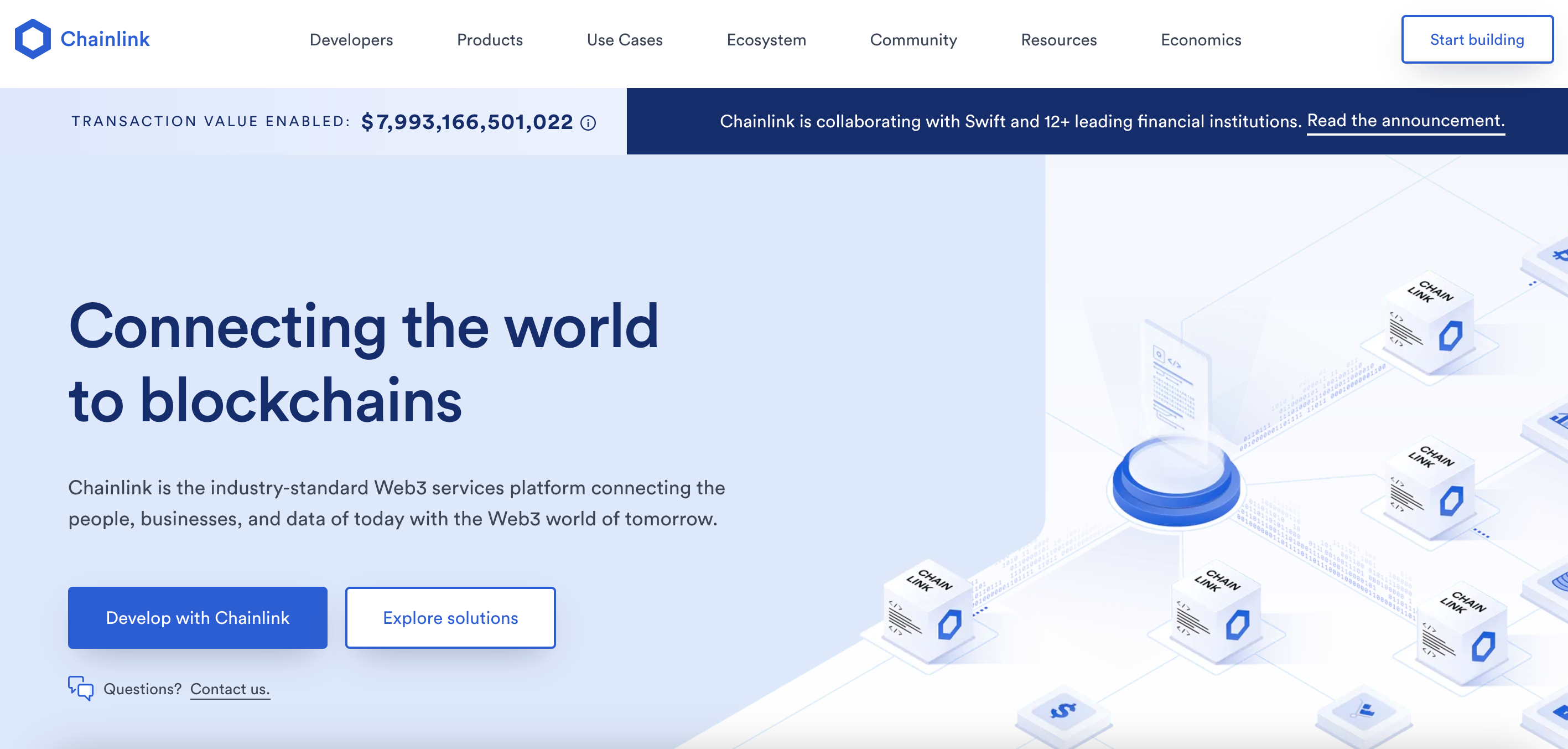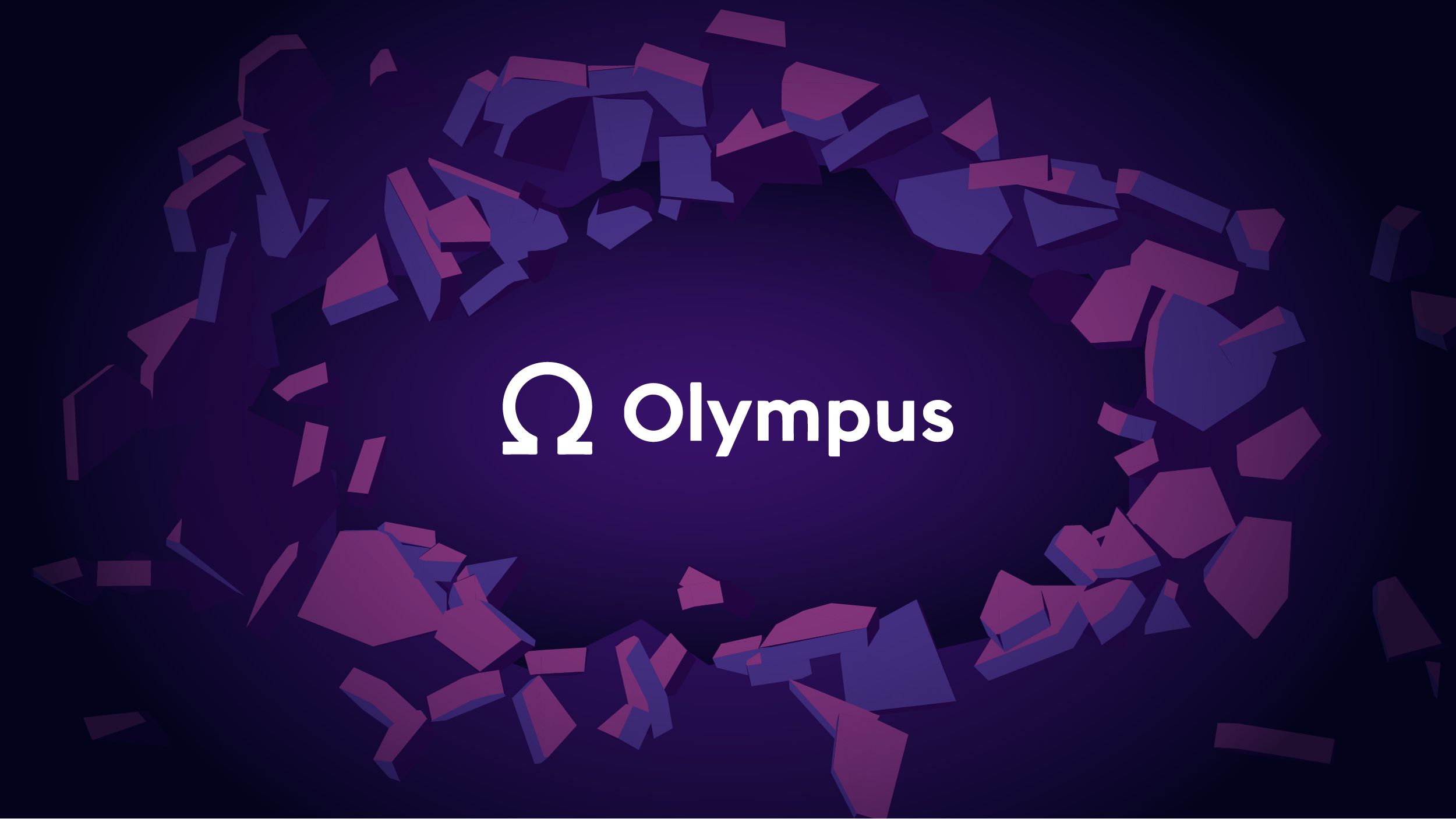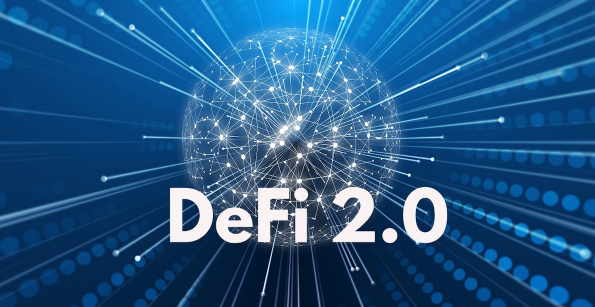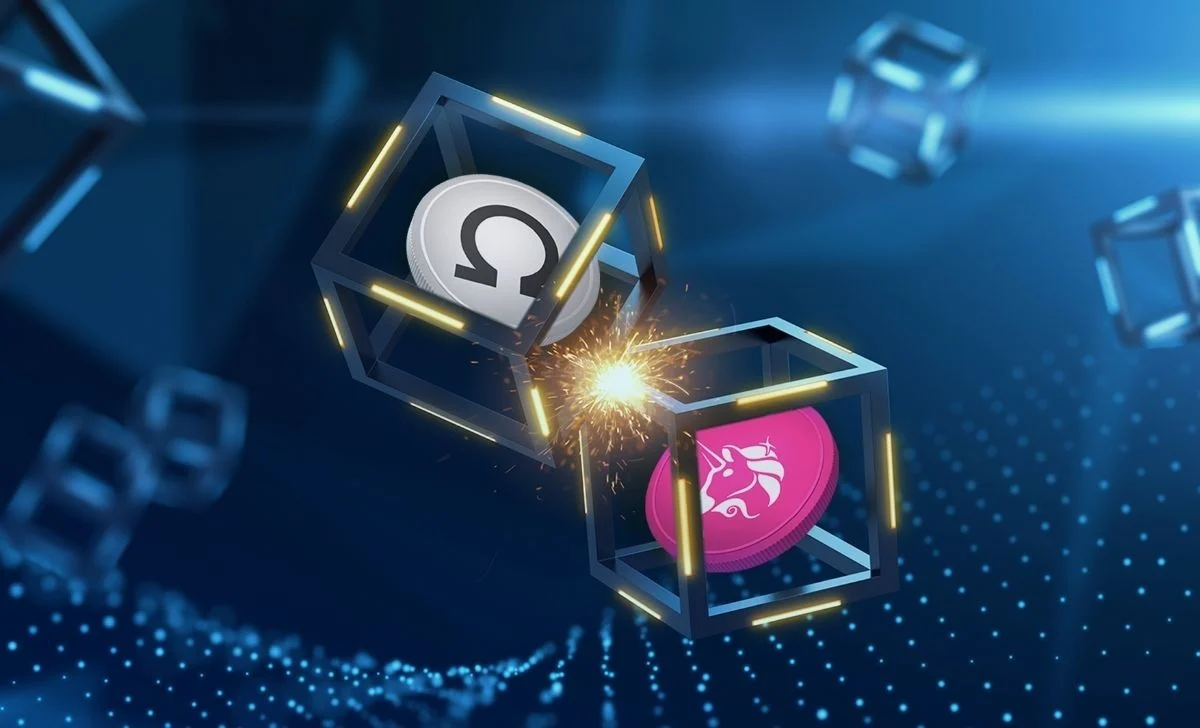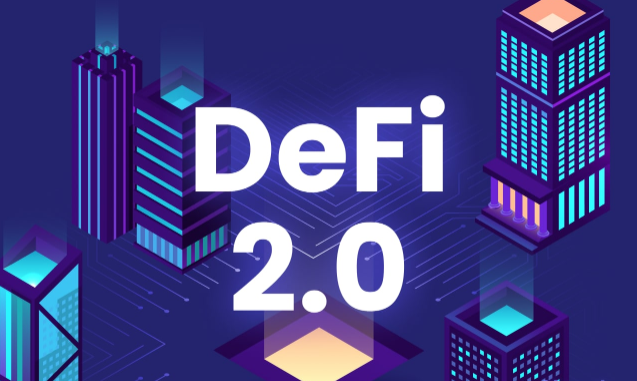The financial landscape is undergoing a profound revolution that is propelled by the growing popularity and adoption of blockchain. Since its emergence, blockchain has been delivering its promise of true decentralization, thereby bringing the concept of Decentralized Finance (DeFi) into life.
However, despite the innovative features that are associated with DeFi, it still has its inherent limitations, prompting developers to introduce an improved iteration known as DeFi 2.0. Amid the growing integration of DeFi 2.0 into many crypto projects, we present some of its best DeFi 2.0 coins to buy this year.
Best DeFi 2.0 Coins To Buy In 2024
Since their introduction, DeFi 2.0 projects have experienced an exponential rise in popularity within the blockchain community. To meet the increasing demand, numerous projects have been rapidly released. However, it is important to note that only a few of them can successfully integrate the defining characteristics of DeFi 2.0 into their offerings.
Here, we present a brief overview of some of the best DeFi 2.0 coins to invest in now.
- Bitcoin Minetrix – Overall Best DeFi 2.0 Project
- Arbitrum – Popular Ethereum Scaling Solution
- Convex Finance – DeFi 2.0 Crypto With A Great Potential
- Algorand – Established DeFi 2.0 Project With Fast Transaction Processing Capabilities
- Frax Protocol – Stablecoin Protocol With A Strong DeFi 2.0 Background
- The Graph – Integrated Ethereum Indexing Protocol
- Chainlink – Utility Crypto That Retrieves And Verifies Data From Sources
- Olympus DAO – Emerging DAO-Based DeFi 2.0 Crypto
- Abracadabra – Lending Platform With An Excellent DeFi 2.0 Background
Top DeFi 2.0 Coins To Buy Reviewed – Full List
Here is our detailed review of all the aforementioned DeFi 2.0 crypto projects.
Bitcoin Minetrix – Overall Best DeFi 2.0 Project
By serving as an innovative and upgraded way to mine Bitcoin, Bitcoin Minetrix ($BTCMTX) earns a top spot on our list of the best DeFi 2.0 projects around. Since it made its market debut, Bitcoin Minetrix has been attracting the attention of top investors and publications.
It stands out among its peers because of its ability to utilize a proof-of-stake consensus mechanism, becoming the first stake-to-mine ecosystem. With this initiative, you can now stake $BTCMTX tokens in return for mining credits. These mining credits are consequently burned for Bitcoin. Hence, it is safe to affirm that Bitcoin Minetrix drastically reduces the needed energy for Bitcoin mining, making it one of the top eco-friendly crypto assets.
Also, it offers Bitcoin enthusiasts one of the cheapest ways to mine BTC. Initially, mining Bitcoin can cost up to $1,000, and it requires much effort. However, Bitcoin Minetrix allows you to mine BTC with as low as $10, without any rigorous exercise. Similarly, the platform has a friendly interface that permits you to navigate easily and scoop up rewards.
BTCMTX offers you various ways to earn passive returns. First, you can earn by staking or through its mining rewards, thus positioning it as one of the best under $1 to buy now. Bitcoin Minetrix’s ecosystem is also safe to use. Recently, its team conducted a third-party smart contract audit as part of the commitment to deliver a secure stake-to-mine ecosystem.
You can still invest in this amazing project by taking advantage of the ongoing presale. The presale provides a rare avenue for savvy investors to get exposed to the project before the token is listed on Dexs and Cexs. The token presently sells for $0.0118 and the price is likely to increase as the presale comes to a close. Reputable analysts like Jacob Bury find potential in this project, describing it as one of the best coins to buy now.
For more information, check out our Bitcoin Minetrix Price Prediction.
Occasioned by the amazing excitement greeting its presale, it has already raised up to $4.5 million in early investments. With this feat, Bitcoin Minetrix has joined the list of the most successful crypto presales in the market right now.
To get started, you can read our guide on how to buy Bitcoin Minetrix safely this year. Reading this guide will provide you detailed insights into the rudiments of this exciting project. You can also visit the platform through the affiliate link that has been provided in this guide.
Your capital is at risk.
Arbitrum – Popular Ethereum Scaling Solution
In the fast-paced world of blockchain technology, scalability has become a paramount concern for Ethereum, the leading smart contract platform. Enter Arbitrum, an Ethereum layer-two (L2) scaling solution developed by Offchain Labs. Leveraging the power of optimistic rollups, Arbitrum aims to address the issues of speed, scalability, and cost-efficiency that have plagued the Ethereum blockchain, as you may have noticed in the past couple of months.
In addition to its role in improving Ethereum’s scalability, Arbitrum also plays a crucial role in the DeFi ecosystem. DeFi has experienced tremendous growth on Ethereum, but the network’s limitations in terms of speed and fees have posed challenges. Arbitrum’s implementation of optimistic rollups aims to address these challenges and unlock the full potential of DeFi, which ultimately is the idea behind DeFi 2.0 as well.
Check out our guide on how to buy Ethereum this year.
Meanwhile, Arbitrum’s implementation of optimistic rollups not only addresses Ethereum’s scalability challenges but also significantly enhances the DeFi landscape. With seamless compatibility, improved scalability, lower fees, and a commitment to decentralization, Arbitrum offers a compelling solution for DeFi applications to thrive and attract a larger user base.
As more DeFi projects migrate to Arbitrum, the ecosystem will continue to expand, driving innovation and pushing the boundaries of decentralized finance.
The vibrant ecosystem surrounding Arbitrum includes a wide range of DeFi applications, wallets, and tools. DeFi projects have recognized the value of Arbitrum’s scalability and have started integrating with the platform, providing users with more options and opportunities to participate in the brand-new DeFi 2.0 space.
The project launched with a bang in the market, thanks to one of the best airdrops this year. Its native token ARB is currently trading in the $1.02 range and can shoot up in the upcoming days.
Meanwhile, ARB can be purchased on prominent crypto exchanges, including Bybit.
Your capital is at risk.
Convex Finance – DeFi 2.0 Crypto With A Great Potential
Convex Finance, a prominent DeFi protocol, was founded by an anonymous team of developers who have managed to establish it as a leading player in the DeFi space. This has made Convex Finance an attractive and relatively low-risk investment opportunity.
One of the key advantages of Convex Finance is its unique offering for liquidity providers (LPs) of Curve, a well-regarded crypto project in the DeFi world. Rather than staking liquidity on Curve directly, LPs can stake with Convex and enjoy enhanced CRV rewards and benefits from liquidity mining.
If you are looking to buy Curve, check out our special guide on how to buy Curve safely this year.
Convex Finance plays a vital role in the race to gain control over the Curve Finance stablecoin exchange. The more CRV tokens a protocol holds, the greater influence it wields over interest rates on Curve. As Curve Finance is currently the largest decentralized exchange (DEX) in terms of total value locked (TVL), the battle for control, dubbed the “Curve wars,” has become a fiercely contested arena within DeFi.
These strategic actions position Convex Finance as a pioneering project within the DeFi 2.0 landscape. The overarching goal of these developments is to provide an additional layer of insurance for staked funds. As a result, the native token of Convex Finance, CVX, becomes an excellent choice for investors seeking projects that could experience significant value appreciation if the DeFi 2.0 trend continues to gain momentum and reach new heights.
The price of CVX has experienced a significant decline and is currently hovering around $3.8. However, there is a possibility that the token may embark on an upward trajectory and potentially surpass its previous all-time high in the coming months. So if you are on the lookout for a future top gainer, then this could surely be an option to consider.
Your capital is at risk.
Algorand – Established DeFi 2.0 Project With Fast Transaction Processing Capabilities
Algorand, an innovative blockchain platform and digital currency, has emerged as a strong competitor in the world of DeFi 2.0 cryptocurrencies. Created in 2017 by Silvio Micali, a renowned cryptographer and professor at MIT, Algorand offers a unique approach to processing transactions and building blockchain infrastructure.
At its core, Algorand aims to challenge major payment processors like Mastercard and Visa by delivering exceptionally fast transaction processing capabilities, achieved through the integration of robust DeFi protocols. Through its Proof of Stake (PoS) protocol, Algorand can efficiently handle a high volume of transactions, positioning it as a formidable rival to platforms such as Ethereum.
Scalability and network optimization are apparently the key priorities for Algorand. The platform achieves this by continuously compressing blockchain data, reducing the data burden on network participants. As one would expect, this approach enables Algorand to maintain high throughput while ensuring security and decentralization.
The native cryptocurrency of the Algorand platform is ALGO, which plays a crucial role in securing the blockchain and incentivizing participants in the ecosystem. ALGO holders who stake their coins have the opportunity to become governors, granting them the ability to vote on blockchain and community matters.
These governors are rewarded with ALGO, which also serves as a utility token for paying transaction processing fees. At the time of writing, the ALGO token boasts a $1 billion market cap and is priced at around $0.135, which is considerably lower than its previous all-time high of $3.15.
Check out our guide to discover how you can buy ALGO safely.
However, as part of its efforts to incorporate DeFi 2.0 features into its system, Algorand recently launched Algo Option Vaults on ThetaNuts, which is considered a significant step towards revolutionizing the DeFi structure of the Algorand project. All these high utility features, DeFi 2.0 integration and other developments make the ALGO token an investment option worth considering this year.
Your capital is at risk.
Frax Protocol – Stablecoin Protocol With A Strong DeFi 2.0 Background
The Frax Protocol, developed by software developer Sam Kazemian, is a community-driven stablecoin system that introduces fractional-algorithmic stability. Its goal is to provide a decentralized and scalable solution for stable digital assets, positioning itself as an alternative to fixed-supply cryptocurrencies like Bitcoin.
This is exactly why the project made the list and is one of the best DeFi 2.0 coins in the space. Operating on-chain and embracing an open-source and permissionless approach, the protocol was initially implemented on the Ethereum blockchain, with the potential for cross-chain integration in the future.
At the heart of the Frax Protocol is its fractional-algorithmic design, which sets it apart from traditional stablecoins. The stablecoin, FRAX, combines collateral-backed and algorithmic components whose ratio dynamically adjusts based on the market pricing of FRAX. If FRAX trades above $1, the collateral ratio decreases, and if it trades below $1, the collateral ratio increases. This mechanism ensures price stability around the $1 mark.
Decentralization and minimized governance are key principles of the Frax Protocol, accomplished through an on-chain governance model. Real-time price data is obtained via fully on-chain oracles, including those from platforms such as Uniswap and Chainlink.
The protocol incorporates two tokens: FRAX, the stablecoin targeting a tight band around $1, and Frax Shares (FXS), the governance token. FXS accrues fees, seigniorage revenue, and excess collateral value, serving both as an investment asset and a means of participating in governance.
Both FRAX and FXS tokens are accessible on major exchanges and DeFi platforms such as Uniswap, providing users with easy access to the stablecoin and governance token. Investors seeking governance rights and potential upside within the fractional-algorithmic stablecoin ecosystem can acquire FXS, while those looking for stability can utilize FRAX as a reliable currency.
The Frax Protocol aligns with the principles of DeFi 2.0, delivering decentralization, scalability, and innovation within the stablecoin landscape in a better, upgraded nature.
The Graph – Integrated Ethereum Indexing Protocol
The Graph is an indexing protocol that plays a vital role in the DeFi ecosystem, serving as an essential infrastructure for decentralized applications. While not directly a DeFi 2.0 protocol itself, it aligns with the concept and contributes to its propagation.
The protocol enables developers to build and publish open APIs called subgraphs, which allow applications to query blockchain data using GraphQL. This facilitates efficient and seamless access to data from networks like Ethereum and IPFS, empowering developers to create innovative decentralized applications.
The Graph offers a hosted service that simplifies development for developers, and it has plans to launch a decentralized network in the future to enhance scalability. Currently, the protocol supports data indexing from Ethereum, IPFS, and POA, with potential compatibility with additional networks in the pipeline.
With thousands of deployed subgraphs by developers, The Graph has become an integral part of various popular DeFi applications such as Uniswap and Synthetix. Its usage has experienced significant growth, with billions of queries recorded in a single month, underscoring its importance in the DeFi landscape.
Another distinguishing aspect of The Graph project is its commitment to bringing reliable decentralized public infrastructure to the mainstream market. It achieves this by utilizing the Graph Token or GRT, a work token that participants lock up to provide indexing and curation services. GRT plays a crucial role in securing the network and rewarding active participation from Indexers, Curators, and Delegators.
Participants earn income proportional to their work and GRT stake, thereby ensuring the integrity and economic security of The Graph Network. This exact innovative and revolutionary nature of The Graph has made it possible for it to attract investor attention within a very short span of time.
If you are a beginner, we recommend that you read our guide on how to buy GRT in 2024.
Currently trading at around $0.15 with a market capitalization of over $1.4 billion, the DeFi 2.0 token is anticipated to experience further growth in the coming months, generating excitement within the community.
Your capital is at risk.
Chainlink – Utility Crypto Project That Retrieves And Verifies Data From Sources
Chainlink is a decentralized oracle network that plays a crucial role in the world of DeFi. Its use case is what makes the project one of the best cryptocurrencies to invest in if one anticipates growth within the DeFi 2.0 domain.
The project acts as a bridge between smart contracts on blockchain platforms and real-world data, enabling smart contracts to securely interact with external data sources and APIs. This functionality is vital for DeFi applications, as they often require accurate and timely data to execute various financial operations and provide reliable services.
DeFi applications rely on Chainlink to access off-chain data, such as asset prices, market data, weather conditions, and more. By leveraging Chainlink’s decentralized oracle network, DeFi projects can ensure the integrity and reliability of data inputs, minimizing the risk of manipulation or tampering.
This capability is essential for financial transactions and sophisticated protocols that require real-time data for accurate decision-making. Meanwhile, Chainlink has a native token, LINK which helps to power the ecosystem.
For more details about this asset, check out our guide on how to buy LINK in 2024.
Chainlink’s oracle infrastructure operates through a network of nodes that retrieve and verify data from various sources. These nodes are responsible for aggregating data, verifying its authenticity, and delivering it to smart contracts. By distributing the data retrieval process across multiple nodes, Chainlink achieves decentralization and prevents a single point of failure or manipulation.
The integration of Chainlink oracles within the DeFi ecosystem has unlocked a myriad of possibilities. DeFi applications can now offer features such as decentralized lending and borrowing, automated market-making, prediction markets, and more, all powered by accurate and reliable external data.
Chainlink has become the industry standard for oracles in DeFi, with a strong track record and widespread adoption. Many leading DeFi protocols, including AAVE, Synthetix, Compound, and Yearn.finance, rely on Chainlink for their data needs. These integrations ensure that DeFi users can access real-time and trustworthy data to execute complex financial operations seamlessly.
Furthermore, Chainlink has also introduced features like decentralized price feeds, which provide reliable and tamper-proof price data for assets in the DeFi space, furthering its aim to build DeFi 2.0.
Your capital is at risk.
Olympus DAO – Emerging DAO-Based DeFi 2.0 Crypto
Olympus DAO is a decentralized autonomous organization (DAO) that is at the forefront of the DeFi 2.0 movement. It is arguably one of the top projects that would come to mind if one thinks of the DeFi 2.0 space, given the emphasis it places on bettering the DeFi space entirely.
Launched in March 2021 on the Ethereum blockchain, Olympus DAO aims to tackle liquidity challenges in the DeFi space through protocol-owned liquidity, also called POL. It operates on a democratic governance model, allowing any member to propose ideas and initiatives for discussion and voting. This inclusive approach ensures community participation in shaping the protocol’s policies and strategies.
Central to Olympus DAO is its native token, OHM, which serves as both a stable currency and a governance token. Each OHS token’s value is backed by protocol-owned assets held in the Olympus treasury, providing stability and intrinsic worth.
However, the protocol employs a bonding model where users can purchase discounted OHM tokens and stake them to contribute to the network. This incentivizes users to increase the native token supply through yield-farming initiatives.
Olympus DAO owns around 99% of the liquidity, which essentially solves liquidity challenges faced by early DeFi projects. The project’s native token OHM aims to become a premier decentralized reserve currency, offering deep liquidity for various transactions and preserving holders’ purchasing power over time.
While Olympus DAO is on the path to decentralization, it already stands as a leading DAO in the DeFi space. By redefining liquidity provision and embracing community governance, Olympus DAO presents an innovative solution for decentralized exchanges and yield farming in the DeFi landscape.
Due to this, OHM could be an ideal pick for those looking to invest in innovative and high-utility projects that could see major upward price action before the end of the year.
Abracadabra – Lending Platform With An Excellent DeFi 2.0 Background
Abracadabra Money is a DeFi lending platform that claims to “bring a touch of magic” to DeFi. It allows users to convert interest-bearing tokens from protocols like Yearn Finance and Sushi into stablecoins called Magic Internet Money (MIM), which can be exchanged for popular stablecoins like DAI, USDC, and USDT.
What sets Abracadabra apart is its focus on DeFi 2.0 principles. Recognizing the explosive growth of yield-bearing tokens, the platform provides a solid lending platform for users to borrow against their positions while retaining their yield.
Using Kashi, an isolated risk market, Abracadabra offers separate Collateralized Debt Positions (CDPs) for each asset user’s deposit, allowing them to adjust borrowing and decrease liquidation risk based on the collateralized assets.
MIM, the platform’s algorithmic stablecoin, maintains a value pegged to $1 through issuance and burning mechanisms. Users can use MIM to access other stablecoins or purchase Bitcoin directly on supported exchanges.
Abracadabra operates on multiple blockchains, including Ethereum, Arbitrum, Fantom, Avalanche, and Binance Smart Chain. It offers a convenient MIM bridge for seamless stablecoin transfers across different chains.
To incentivize liquidity providers, Abracadabra introduced SPELL tokens. These tokens are distributed to liquidity providers, with a significant portion allocated to the MIM + 3Crv Curve LP pool on Ethereum.
Recognizing the need for sustainable liquidity, the platform partnered with the previously mentioned Olympus DAO project to launch the Olympus Pro program. Through bonding, liquidity providers can sell their liquidity to Abracadabra in exchange for discounted SPELL tokens, ensuring long-term liquidity stability and value creation.
SPELL tokens have multiple functions within the Abracadabra ecosystem. Holders can participate in governance decisions, stake tokens to collect sSPELL, and receive a share of platform fees, thereby incentivizing liquidity provision and collaboration with Curve Finance for enhanced MIM pool rewards.
With its innovative lending mechanisms, protocol-owned liquidity approach, and community governance, the SPELL token could definitely be a great asset to add to one’s portfolio.
What Is DeFi 2.0?
DeFi 2.0 has garnered significant attention in the finance industry, generating excitement about its potential. However, it is essential to understand that DeFi 2.0 does not entail a complete overhaul of existing products or services. Rather, it represents an evolution of operations within numerous DeFi initiatives.
This term has emerged in the blockchain realm to describe a specific category of DeFi protocols that are built upon the foundations laid by previous advancements such as yield farming and lending.
Check out our guide to discover the best yield farming platforms right now.
Notably, DeFi 2.0 implementations address liquidity constraints faced by on-chain systems with native tokens, making it a key focal point.
DeFi 2.0, therefore, represents a significant advancement in decentralized finance, progressing from the groundwork laid by DeFi 1.0. While the initial phase of DeFi is primarily concentrated on establishing decentralized financial products and services, DeFi 2.0 takes a step further by prioritizing scalability, security, and user experience enhancements.
The aim is to foster a more sophisticated and long-lasting ecosystem for decentralized finance, building upon the lessons and achievements of its predecessor.
How Is DeFi 1.0 Different From DeFi 2.0?
To provide a comprehensive overview of the contrasting characteristics of DeFi 1.0 and DeFi 2.0, let’s highlight a few key points. This will help elucidate the remarkable advancement and forward-thinking nature exhibited by DeFi 2.0 in terms of progressiveness.
DeFi 1.0
- Liquidity Focus – DeFi 1.0 protocols primarily focused on acquiring and managing liquidity within their platforms.
- Limited Interconnections – The connections between users were less emphasized, leading to a fragmented ecosystem with fewer opportunities for collaboration and long-lasting relationships.
- Governance Challenges – Governance structures were often less developed, relying on centralized decision-making or limited community participation.
- Incentive Programs – DeFi 1.0 struggled with liquidity problems and had limited mechanisms to incentivize users to contribute and maintain capital.
- Sustainability Concerns – The long-term sustainability of DeFi 1.0 protocols was uncertain, with potential challenges in maintaining a decentralized ecosystem and attracting a broader user base.
DeFi 2.0
- Enhanced User Connections – DeFi 2.0 protocols prioritize connecting users who contribute liquidity, fostering stronger horizontal connections and facilitating lasting relationships.
- Optimized Governance – DeFi 2.0 protocols incorporate improved governance patterns, allowing community members to collaborate in decision-making and policy creation, reducing reliance on central authorities.
- User-Friendly Incentives – DeFi 2.0 projects employ creative incentive schemes to address liquidity challenges, attracting and retaining capital while fostering cooperative communities.
- Focus on Sustainability – DeFi 2.0 protocols are designed with sustainability in mind, considering factors such as liquidity, interconnectedness, and sound governance to create a decentralized ecosystem that can endure over time.
- Potential for Scale and Growth – The emphasis on sustainability positions DeFi 2.0 projects to gather momentum, attract a larger user base, and redefine finance on a broader scale.
In summary, we can come to the conclusion that DeFi 2.0 builds upon the foundation of DeFi 1.0 by emphasizing stronger user connections, optimized governance, user-friendly incentives, and a focus on sustainability. These advancements aim to create a decentralized ecosystem that is more interconnected, democratic, and capable of long-term growth and stability.
Also, check our guide on the top DeFi coins to buy now.
How We Ranked The DeFi 2.0 Projects
While DeFi 2.0 is a relatively nascent domain within the cryptocurrency realm, the criteria for evaluating and selecting the most promising options closely resemble those employed in other project evaluations.
Here are several prominent factors we carefully considered before including projects in our list:
1) Project Utility
Regardless of when a project was launched or its current price levels, the utility it offers remains paramount and serves as a primary reason for investors to allocate funds. Naturally, investors seek projects with robust use cases, offering products that address real-world problems.
It is evident that every project included in the list emphasizes a strong use case, with some even focusing on eco-friendly initiatives like Bitcoin Minetrix.
2) Potential For Growth
Projects that possess robust use cases and innovative concepts often encounter challenges when it comes to expanding and gaining visibility. This difficulty in scaling and attracting investors can hinder the project’s ability to grow and flourish. Our focus lies on projects that have already cultivated a dedicated community, which holds the potential to propel them to great heights during the upcoming bullish market trend.
Additionally, factors such as the pace of development, regular upgrades, effective engagement between developers and the community, and strategic partnerships contribute significantly to ensuring long-term growth prospects. In summary, it is crucial for a project to exhibit substantial potential for future growth.
3) Smaller Marketcap
A smaller market capitalization can often indicate a higher potential for profitability. This is because smaller market cap tokens require a relatively smaller infusion of funds to experience significant value appreciation.
Take, for example, the Bitcoin Minetrix token, which falls into the category of small market cap tokens. The crypto is currently available on presale, thus providing investors with the opportunity to invest with little funds.
Due to its small market cap, there exists considerable potential for the token’s value to increase by 10 times or even 50 times, particularly when it launches on crypto exchanges.
Check out our guide to discover other small market cap tokens to buy now.
4) Interoperability And Integration
The ability of a project to integrate with other DeFi protocols and platforms, as well as its support for interoperability, was taken into account. Projects that showcased a willingness to collaborate and contribute to the broader DeFi ecosystem were highly regarded.
5) Past Performance
Past performance often serves as a valuable indicator of how a token might perform in the coming months. Although not every project mentioned in the article has a direct association with DeFi 2.0, they share similarities that could result in an upward trend if the DeFi 2.0 trend resurfaces.
This resurgence could potentially drive major DeFi tokens to experience significant value surges once again. Therefore, when compiling the list, past performance was considered as a factor, taking into account the potential for these tokens to shoot up in the next bull run.
Check out our guide to discover how to buy cryptocurrency this year.
Conclusion
With the rising popularity of DeFi 2.0 projects, investors are bound to gravitate towards initiatives that demonstrate promising growth potential. Although the market offers numerous options to explore, selecting top-tier projects like the ones highlighted in this article becomes paramount for maximizing profits when the anticipated bull market takes hold.
Bitcoin Minetrix stands out as a noteworthy recommendation. This crypto project has been rapidly gaining momentum, and its recent traction suggests the potential for remarkable gains in the near future.
FAQs
How is DeFi 2.0 different from DeFi 2.0?
DeFi 2.0 is the second generation of dApps that are concerned with decentralized finance. One may describe it as a better, more upgraded version of DeFi 1.0.
What is the best DeFi 2.0 token to buy this year?
Our recommended pick for the best DeFi 2.0 token at the moment is Bitcoin Minetrix. It utilizes a proof-of-stake consensus mechanism, allowing stakers to earn mining credits. This innovative feature alongside others have positioned Bitcoin Minetrix as the top DeFi 2.0 token to buy now.
Are DeFi 2.0 tokens profitable?
Yes. It is very likely that a majority of high potential DeFi 2.0 tokens will shoot up in value in the next bull run, given the demand and utility these tokens showcase.
Where can I buy DeFi 2.0 tokens?
DeFi 2.0 crypto tokens, similar to other crypto, can be brought from centralized or decentralized exchanges. However, some projects, like Bitcoin Minetrix may still be in the presale stage, which means that you will be required to visit the official website to purchase tokens directly.
